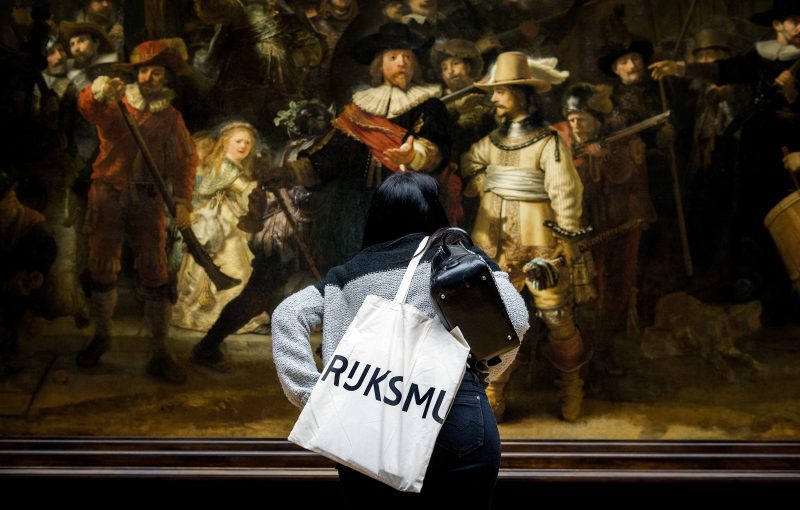World can see museum restore Rembrandt’s ‘Night Watch’
The multi-million-euro overhaul of Rembrandt’s ‘The Night Watch’, one of the world’s most famous paintings, will be streamed online (Koen van Weel)
Amsterdam (AFP) – Amsterdam’s Rijksmuseum on Monday began the biggest ever restoration of Rembrandt’s “The Night Watch”, building a giant glass case around the famed painting so the world can see the work carried out live.
In what has been compared to a military operation, experts at the museum in the Dutch capital will spend a year studying the 1642 masterpiece before embarking on a huge makeover that could take several years more.
The multi-million-euro revamp of the tableau — the survivor of a difficult history including several acts of vandalism and a period in hiding from the Nazis — will also be livestreamed online.
“More than two and a half million people come and see it each year. It belongs to everybody who lives in the Netherlands, and the world,” Rijksmuseum director Taco Dibbits told reporters.
“And we felt that the public has the right to see what happens to that painting.”
Experts hope the research could also shed more light on the mysteries of how the greatest artist of the Dutch Golden Age created his masterpieces.
“We know very little about how Rembrandt made this painting and we hope to discover by knowing which paint he used, which pigments he used,” Dibbits said.
“That’s of course very exciting to do because everybody wants to kind of look into the kitchen of Rembrandt.”
– White haze –
Rembrandt van Rijn created his masterpiece after a commission by the mayor and leader of the civic guard of Amsterdam, Frans Banninck Cocq, to depict the officers and other members of the so-called “Night Watch” militia.
Now one of the world’s famous paintings, it remains under constant scrutiny by experts, who have recently noticed some changes.
In particular, a white haze has appeared on the surface of some parts, especially in the area around damage caused in 1975 when a mentally disturbed man slashed the painting 12 times. The haze is now bleaching out the figure of a small dog.
While most restoration work happens behind closed doors, the Rijksmuseum has decided to let daylight in on the magic.
Experts will work on the Night Watch inside a glass case designed by French architect Jean-Michel Wilmotte, who was behind revamps of both the Rijksmuseum and the Louvre gallery in Paris.
“The Night Watch was restored in the 1970s… while the restorers were at work, we closed the curtains at that time. And now it will all be on view for the public to see so in a sense it’s the first time,” Dibbits told AFP.
He said a team of 25 “scientists, researchers, conservators, curators, restorers” would work on the painting using high-resolution photography and computer analysis of every layer including varnish, paint and canvas before deciding on the best restoration techniques.
– Historic survivor –
But the museum warned that anyone expecting fast-paced excitement might be better off watching paint dry.
“The research phase will take about one year,” said Petria Noble, head of paintings conservation at Rijksmuseum. “At this moment, we don’t really know how long the actual treatment of the painting will take.”
Noble said the sheer scale of the three-metre-by-four-metre (nine-foot-by-13-foot) painting — which is housed in its own special room at the museum — had also contributed to the decision to restore it in public view.
“Given the size of the painting, it’s really not possible to take it out of the galleries. That also imposes a certain risk for the painting,” she said.
In many ways it is a miracle Rembrandt’s brooding painting has survived the last three and a half centuries to be restored at all.
Large chunks were cut from each side of the Night Watch during a move in the 1700s, followed by several bouts of work on the varnish that darkened the picture and helped give it its name.
In 1911 a man stabbed it with a knife. Then in September 1939 the painting was evacuated from the Rijksmuseum and hidden in the cave, just months before Nazi Germany invaded the Netherlands. After the war in 1945 it needed major restoration.
Then came the 1975 knife attack, but its sufferings were still not over, as a man sprayed it with acid in 1990.
Disclaimer: Validity of the above story is for 7 Days from original date of publishing. Source: AFP.


